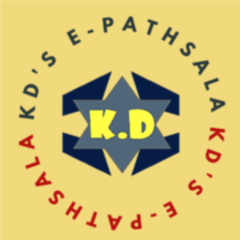Learning, in psychology, the process by which a relatively lasting change in potential behaviour occurs because of practice or experience. Learning is also a process of acquiring modifications in existing knowledge, skills, habits, or tendencies through experience, practice, or exercise. The ability to learn is possessed by humans, animals, and some machines; there is also evidence for some kind of learning in certain plants.
Definition of Learning
Henry, P smith “Learning is the acquisition of new behaviour or strengthening or weakening of old behaviour as a result of experience”.
Crow and Crow “Learning is the acquisition of habits, knowledge and attitudes. It involves new ways of doing things, and it operates in an individual’s attempt to overcome obstacles or to adjust to new situations.”
Skinner “Learning is the process of progressive behaviour adaptation.”
According to W.R McLaw, learning has the following characteristics.
1. Learning is a continuous modification of behaviour that continues throughout life.
2. Learning is pervasive. It reaches into all aspects of human life.
3. Learning involves the whole person, socially, emotionally & intellectually.
4. Learning is often a change in the organisation of behaviour.
5. Learning is developmental. Time is one of its dimensions.
6. Learning is responsive to incentives. In most cases positive incentives such as rewards are more effective than negative incentives such as punishments.
Learning curve is a graphic representation of how learning takes place in a particular situation. In all types of learning situations, the course of learning can be depicted and described graphically by drawing learning curves against the x and y axis.
Theories of Learning


Ivan P. Pavlov (1849-1936), a Russian psychologist was the discoverer of classical conditioning theory of learning. He won the Nobel Prize in 1904 for his research on the digestive process. He was basically interested in studying the process of gastric secretion in dogs. His finding brought about a revolutionary change in the field of learning. Conditioning is the modification of the natural response.
In one of his experiments, Pavlov kept a dog hungry during the night and then tied him on the experimental table, which was fitted with certain mechanically controlled devices. The dog was made comfortable and distractions were excluded as far as possible. The observer (Pavlov) kept himself hidden from the view of the dog but was able to view all the movements of the dogs by means of a set of mirrors.

Food is the ‘natural stimulus’ as it motivates the dog to respond. His response is secretion of saliva. Ringing of the bell is an ‘artificial stimulus’, also called ‘conditioned stimulus’. The response of the dog when the bell above is rung is called a ‘conditioned response’. Conditioning is thus the modification of the natural response. The abbreviations used are: NS for Natural Stimulus, CS for Conditioned Stimulus, NR for Natural Response and CR for Conditioned Response. Food is the ‘natural stimulus’ as it motivates the dog to respond. His response is secretion of saliva. Ringing of the bell is an ‘artificial stimulus’, also called ‘conditioned stimulus’. The response of the dog when the bell above is rung is called a ‘conditioned response’. Conditioning is thus the modification of the natural response. The abbreviations used are: NS for Natural Stimulus, CS for Conditioned Stimulus, NR for Natural Response and CR for Conditioned Response.

In this experiment, the dog learned to secrete saliva at the sound of the bell. This kind of learning was named as Learning by Conditioning.
For explaining his theory, Pavlov has given some principles of conditioning.
1. Extinction : If the sound of the bell is not followed by food it implies that there is no reinforcement. A stage reaches when the dog stops to secrete saliva. This process is called extinction. Pavlov noted in his experiments that when the spacing of test trials was increased, the response extinguished rapidly.
4. Stimulus discrimination : When two stimuli are sufficiently distinguishable, the organism can be conditioned to respond to one of them. This is done by regularly reinforcing one stimulus and non-reinforcing the other. The organism can be conditioned to react differently to the two stimuli which at first make nearly the same response. This is how we learn to react differently to different brands of tea or coffee. But in case the organism is pressed too far it causes experimental neurosis. In the laboratory when the dog was made to discriminate between two very thin ellipses it started howling at the experiments. It is clear that response to a particular stimulus can be achieved only through selective reward.
1. The theory believed that one must be able to practice and master a task effectively before embarking on another one. This means that a student needs to be able to respond to a particular stimulus (information) before he/she can be associated with a new one.




